
1. Get Them Into Breakfast and Lunch
One reason we don’t get enough vegetables is that many of us consider them merely as a side dish to dinner. If you really want to increase your vegetable consumption, try eating them at other meals. Here are a few ways to do it:
• Choose salad as part of your everyday lunch.
• Make scrambled eggs a regular breakfast, using the egg to hold together sautéed vegetables such as peppers, mushrooms, zucchini, asparagus or onions.
• Eat leftover veggies from last night’s dinner with breakfast or lunch.
• Snack on cherry tomatoes, cucumbers, carrots and celery – all the time.
• Make vegetable sandwiches using almost any vegetable that won’t roll out of the bread.
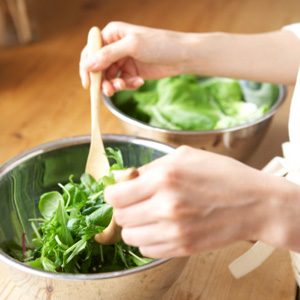
2. Start Your Meal With A Salad
Start each dinner with a mixed green salad before you serve the main course. Not only will it help you to eat more veggies, but by filling your stomach first with a nutrient-rich, low-calorie salad, there’ll be just a bit less room for the higher-calorie items that follow.
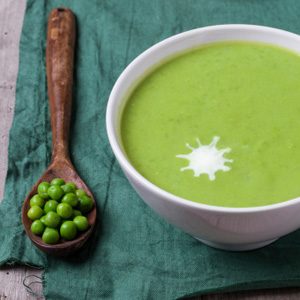
3. Purée Veggies Into Soup
Start each dinner with a mixed green salad before you serve the main course. Not only will it help you to eat more veggies, but by filling your stomach first with a nutrient-rich, low-calorie salad, there’ll be just a bit less room for the higher-calorie items that follow.
Potatoes, carrots, cauliflower, broccoli – just about any cooked or left-over vegetable can be made into a creamy, comforting soup.
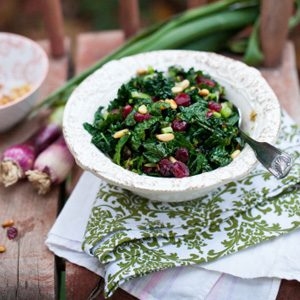
4. Have Salad As A Main
Once a week, eat a main-course salad for dinner. A salad niçoise is a good example: mixed greens, steamed green beans, boiled potatoes, sliced hard-boiled egg and tuna drizzled with vinaigrette. Serve with crusty whole-grain bread.

5. Move Your Veggies To The Top Shelf Of The Fridge
As long as they’re bagged properly, the vegetables will last as well as they would in a vegetable crisper. More important, now they’ll be visible and enticing, prompting you to grab them more often. Try keeping quick to eat vegetables such as cherry tomatoes, cucumber, and baby carrots to grab as a snack.
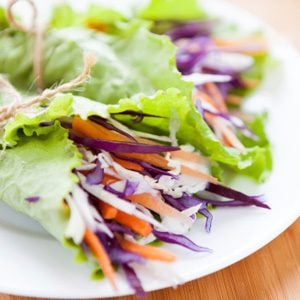
6. Add Chopped Greens To Everything
Add chopped kale or other hearty greens to your next soup or stew. Steam the greens for a couple of minutes and they’ll be tender and delicious. You can also incorporate grated carrots and shredded cabbage in your soup, salad or casseroles. These coleslaw ingredients add flavour, colour and lots of vitamins and minerals.

7. Use Vegetables As Sauces
How about puréed roasted red peppers seasoned with herbs and a bit of lemon juice, then drizzled over fish? Or purée butternut squash with carrots, grated ginger and a bit of brown sugar for a yummy topping for chicken. Cooked vegetables are easily converted into sauces, it just takes a little ingenuity and a blender.
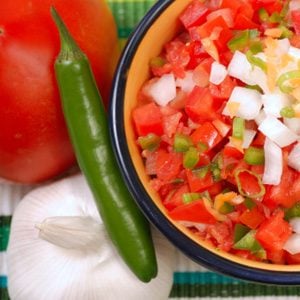
8. Use Salsa Liberally
First, make sure you have a large batch of tomato salsa with vegetables. One good approach is to add chopped yellow peppers and zucchini to store-bought salsa. Don’t save it just for tortilla chips, add it to potatoes, sandwiches, eggs, or steak, or chicken breast.

9. Try Meatless Monday
One day a week, go vegetarian. You can do this by replacing the meat serving with a vegetable serving. You can dabble in the world of vegetarian cooking and start adding lots of whole grains and vegetables to make some robust meals.

10. Go Exotic
Every week, try to buy a slightly exotic vegetable, perhaps something that you’ve never eaten before. Here are some ideas:
Endive: This type of lettuce has a mild, slightly bitter flavour and is packed with fibre, iron and potassium. Use it in salads and with vegetable dips.
Bok Choy: An Asian cabbage, bok choy is excellent chopped and stir-fried in a bit of peanut oil and soy sauce.
Kohlrabi: A member of the turnip family, this is also called a cabbage turnip. It’s sweeter, juicer, crisper and more delicate in flavour than a turnip and the cooked leaves have a kale/collard flavour. Trim and pare the bulb to remove all traces of the fibrous under layer just beneath the skin then eat the vegetable raw, boiled, steamed, microwaved, or sautéed.
Fennel: Also known as sweet anise, fennel has a mild licorice flavour. The feathery fronds can flavour soups and stews while the broad, bulbous base can be eaten raw or sliced and diced and added to soups, stews or stuffing.